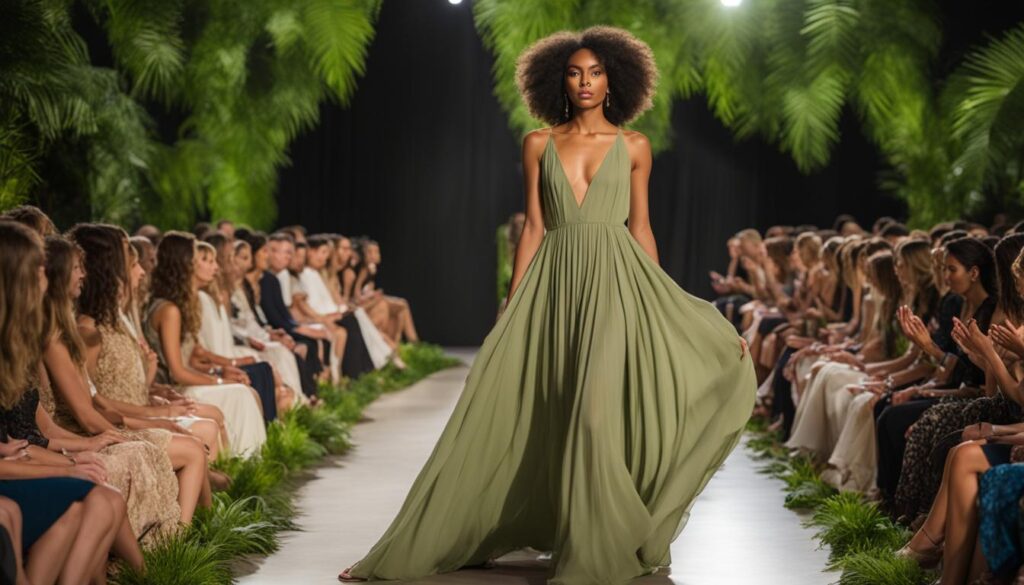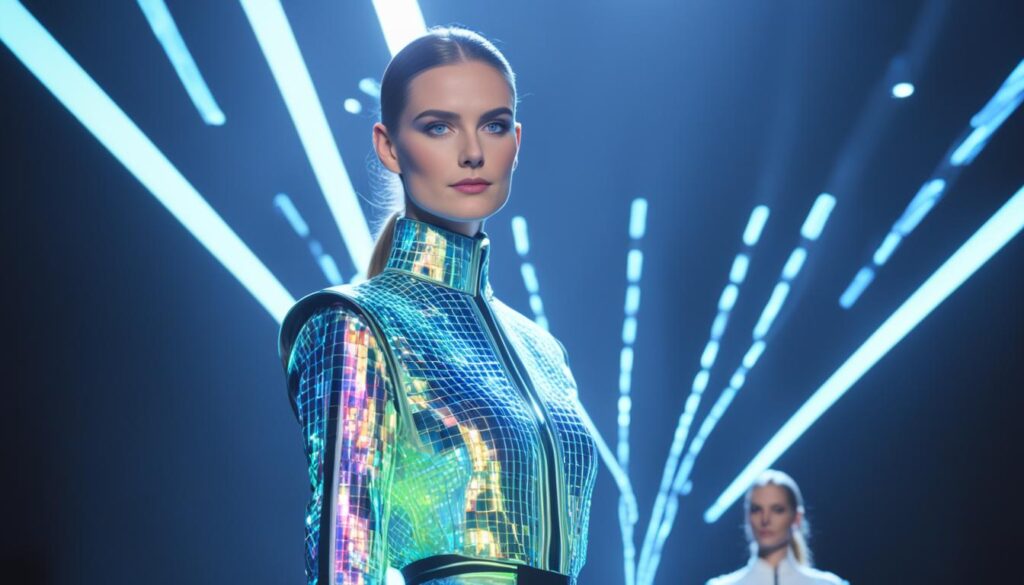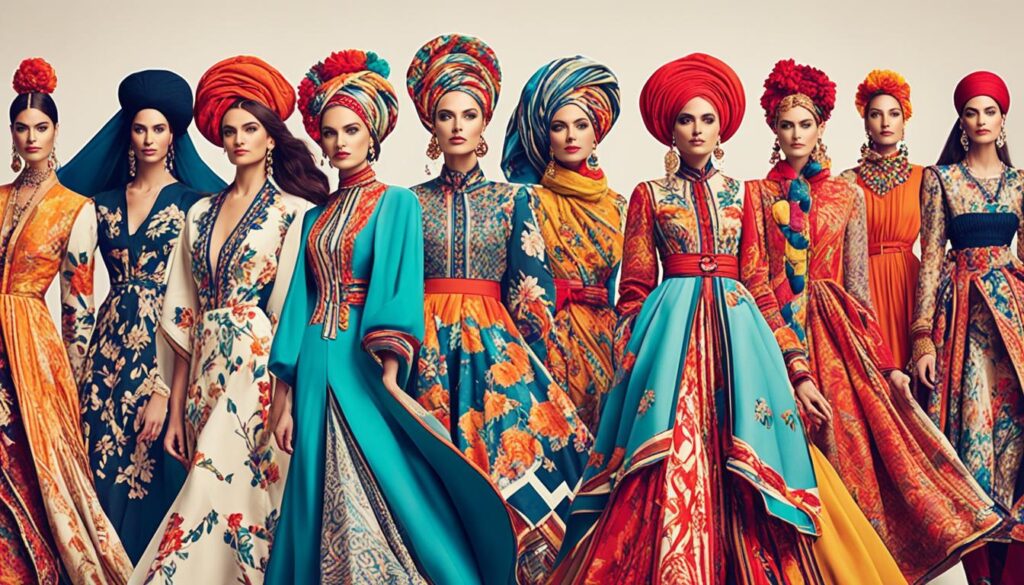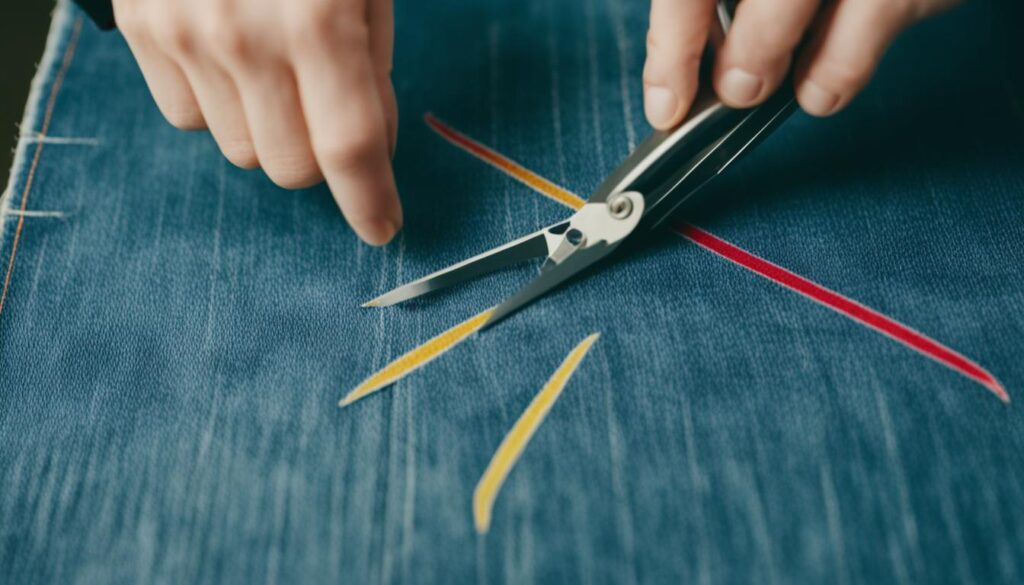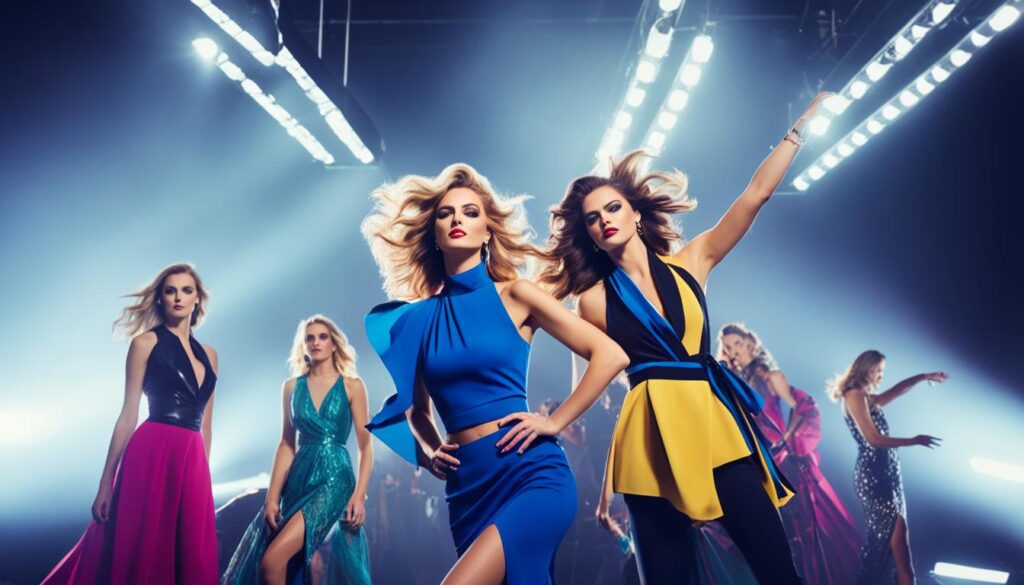In a groundbreaking move for the fashion industry’s commitment to sustainability, Global Fashion Agenda (GFA) Chairman Thomas Tochtermann challenged top fashion CEOs to invest in transitioning major manufacturing countries from fossil fuels to renewable energy. Bestseller and H&M Group have pledged a significant commitment of $100 million to support the development of renewable energy capacity in Bangladesh, one of the world’s largest hubs for garment manufacturing. This initiative aims to address the sustainability challenges faced by the fashion industry, with a focus on funding decarbonization efforts. The fashion sector needs an estimated $380 billion over the next 25 years to develop renewable electricity sources. Brands like H&M are leading the charge in investing in large-scale renewable energy projects to reduce the industry’s environmental impact.
Key Takeaways:
- Sustainable luxury fashion is gaining momentum in the fashion industry.
- Investments in renewable energy are crucial for reducing the environmental impact of the fashion sector.
- H&M and Bestseller’s commitment of $100 million in renewable energy projects in Bangladesh is a significant step towards sustainability.
- The fashion industry requires substantial funding to develop renewable electricity sources.
- Brands like H&M are taking a leading role in investing in large-scale renewable energy projects.
The Importance of Clean Energy in Sustainable Fashion
The majority of fashion’s environmental footprint arises during the manufacturing process, where factories rely heavily on power grids fueled by fossil energy sources. The shift to cleaner energy options is crucial to reducing the industry’s impact. Brands like H&M are acknowledging the challenges of independently investing in large-scale renewable energy projects and are pioneering a collaborative investment model.
Through the proposed wind farm in Bangladesh, scheduled to commence operations in 2028 with a 500-megawatt capacity, the industry has the potential to significantly reduce emissions by 725,000 tonnes annually. This project serves as a model for other manufacturing countries and signals a shift towards a more sustainable fashion industry.
| Benefits of Clean Energy in Sustainable Fashion: | Key Impacts: |
|---|---|
| Reduces carbon emissions | 725,000 tonnes reduction annually |
| Promotes renewable energy adoption | Shift towards cleaner energy sources |
| Enhances brand reputation | Increased consumer trust and loyalty |
| Creates a more sustainable industry | Positive impact on the environment |
Quote:
“Investing in clean energy sources is not only an environmental responsibility but also a strategic move towards a more sustainable and profitable future for the fashion industry.” – Thomas Tochtermann, Chairman of Global Fashion Agenda
The Role of Partnership and Collaboration in Sustainable Fashion
The partnership between Global Fashion Agenda (GFA), Bestseller, and H&M showcases the power of collaboration in driving sustainable change within the fashion industry. This partnership has resulted in a groundbreaking initiative to invest $100 million in renewable energy projects in Bangladesh, one of the largest hubs for garment manufacturing.
GFA aims to invite more luxury sustainable brands to participate in this wind project, with a minimum commitment of $10 million each. By pooling resources and knowledge, these brands are taking significant steps towards reducing their environmental impact and promoting sustainable practices in the fashion industry.
Through this collaborative effort, the fashion industry is proactively addressing sustainability challenges and working towards a greener and more sustainable future. By combining their expertise and financial resources, these brands set an example for others in the industry to follow, encouraging widespread adoption of sustainable practices.
“Collaboration is key in driving sustainable change within the fashion industry. By coming together, brands can make a greater impact and accelerate the transition towards a more sustainable future.” – Global Fashion Agenda
This partnership and collaborative investment model not only address the environmental impact of fashion manufacturing but also provide a platform for brands to claim credit for emissions reductions generated by these projects. By participating in renewable energy initiatives, luxury sustainable brands can showcase their commitment to sustainability, build brand reputation, and attract environmentally-conscious consumers.
The success of this collaborative effort signifies a pivotal step towards a greener and more sustainable future for the entire fashion industry. It highlights the importance of partnership and collaboration in driving sustainable change, as well as the significant role that luxury sustainable brands can play in leading the sustainable fashion movement.
Investment Breakdown
| Brand | Investment Amount |
|—————–|——————-|
| Bestseller | $50 million |
| H&M | $50 million |
| Participating Luxury Sustainable Brands | Minimum commitment of $10 million each |
The Challenges and Future of Sustainable Fashion
While sustainability initiatives like the renewable energy project in Bangladesh have made significant progress in the fashion industry, there are still hurdles that need to be overcome for a truly sustainable future. Current emission projections indicate a 45 percent increase by the end of the decade, falling short of the necessary 50 percent reduction.
Advocacy groups are calling for swift action and increased industry priority to address this gap. It is crucial for the fashion industry to prioritize sustainability and invest in innovative solutions.
GFA, Global Fashion Agenda, is actively exploring similar projects in other manufacturing countries to drive transformative change. This ongoing effort highlights the industry’s commitment to sustainable practices and the continuous push for a greener future.
The Power of Collaboration: Quotes from Industry Leaders
“Sustainability in the fashion industry requires collective efforts and collaboration. It’s not just about individual brands; it’s about joining forces to create significant impact.” – Thomas Tochtermann, Chairman, Global Fashion Agenda
“Investing in renewable energy projects is not just an environmental responsibility but also a strategic move for long-term business sustainability.” – Sofia Roven, CEO, Bestseller
By staying updated on sustainable fashion trends, both brands and consumers can contribute to a more sustainable future. Embracing ethical practices, supporting sustainable fashion brands, and prioritizing eco-friendly choices in clothing can make a real difference in the industry’s journey towards sustainability.
Key Challenges and Considerations for Sustainable Fashion
- Reducing greenhouse gas emissions throughout the fashion supply chain
- Adopting circular fashion practices to minimize waste
- Addressing labor and ethical concerns in manufacturing processes
- Creating innovative materials and technologies for sustainable fashion design
- Increasing consumer awareness and demand for sustainable fashion
By recognizing these challenges and collectively working towards solutions, the fashion industry can pave the way for a future that embraces sustainability, ethics, and style.
Conclusion
The fashion industry’s shift towards sustainable luxury fashion marks a significant step forward in the pursuit of a more eco-friendly future. Initiatives like the renewable energy project in Bangladesh and the collaborative investment model demonstrate that brands are taking active measures to reduce their environmental impact. However, achieving true sustainability in the fashion industry requires ongoing dedication and shared responsibility.
By embracing sustainable fashion trends, supporting ethical brands, and prioritizing sustainable fashion design, both brands and consumers can play a crucial role in driving positive change. Adopting sustainable fashion practices not only promotes environmentally conscious choices but also encourages the development of luxury sustainable clothing that is both ethically produced and visually appealing.
As the fashion industry continues to evolve, it is vital for all stakeholders to prioritize sustainable solutions. By making conscious decisions and supporting sustainable fashion, we can contribute to a more sustainable and ethical future. Together, let’s work towards creating a fashion industry that not only values style and luxury but also respects our planet and the people involved in the production process.
FAQ
What is sustainable luxury fashion?
Sustainable luxury fashion refers to clothing and accessories that are produced in a way that minimizes their environmental impact and promotes ethical practices throughout the supply chain. It combines the concepts of sustainability and luxury, offering high-quality, stylish products that are produced in a sustainable and responsible manner.
What is eco-friendly fashion?
Eco-friendly fashion, also known as sustainable fashion or ethical fashion, is a movement within the fashion industry that aims to minimize the negative environmental and social impacts of clothing production. It involves using environmentally friendly materials, reducing waste, promoting fair labor practices, and considering the entire lifecycle of a garment.
Which are some sustainable fashion brands?
There are several sustainable fashion brands that prioritize ethical and environmentally friendly production practices. Some notable examples include Patagonia, Stella McCartney, Eileen Fisher, Reformation, and Veja. These brands are committed to creating stylish, high-quality clothing while minimizing their impact on the planet.
Why is clean energy important in sustainable fashion?
Clean energy is crucial in sustainable fashion because the manufacturing process is one of the most significant contributors to the industry’s environmental footprint. By transitioning from fossil fuels to renewable energy sources, such as wind or solar power, fashion brands can reduce their greenhouse gas emissions and minimize their impact on climate change.
How does partnership and collaboration promote sustainable fashion?
Partnership and collaboration play a key role in promoting sustainable fashion by pooling resources, sharing knowledge, and driving innovation. Collaborative efforts allow brands to tackle sustainability challenges together, invest in large-scale renewable energy projects, and influence industry-wide change. By working together, fashion companies can make a more significant impact in reducing their environmental footprint.
What are the challenges and the future of sustainable fashion?
Despite the progress made in sustainable fashion, the industry still faces significant challenges. The projected increase in emissions falls short of the necessary reduction to combat climate change. However, advocacy groups and organizations like the Global Fashion Agenda are actively exploring projects in other manufacturing countries to drive transformative change. By staying updated on sustainable fashion trends and prioritizing sustainable fashion design, the industry can strive for a greener and more sustainable future.

